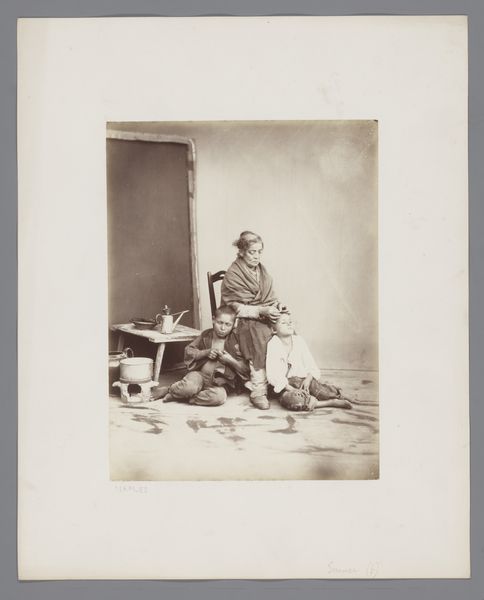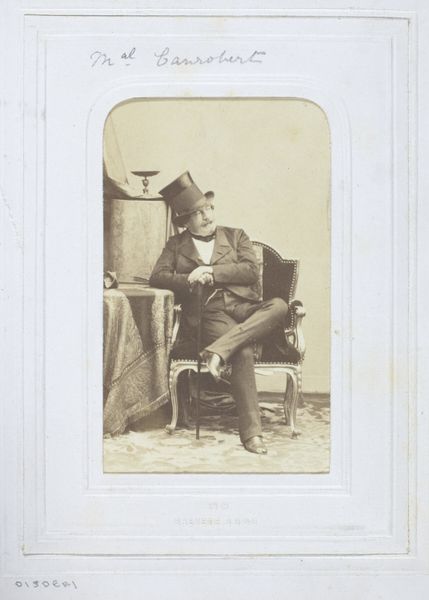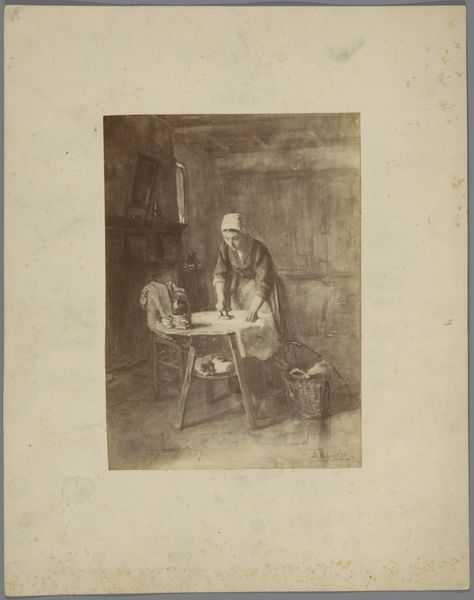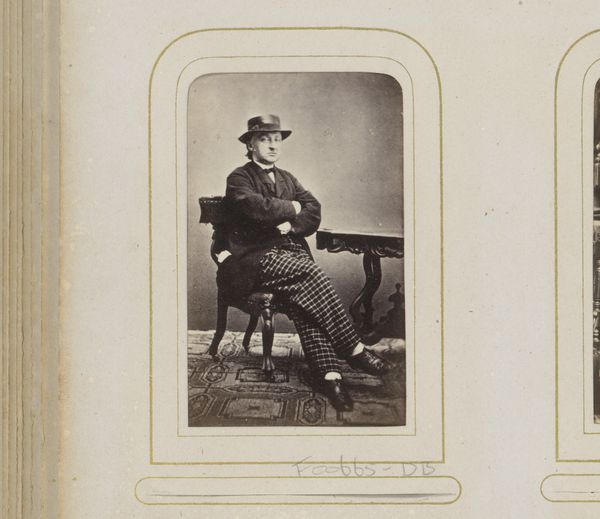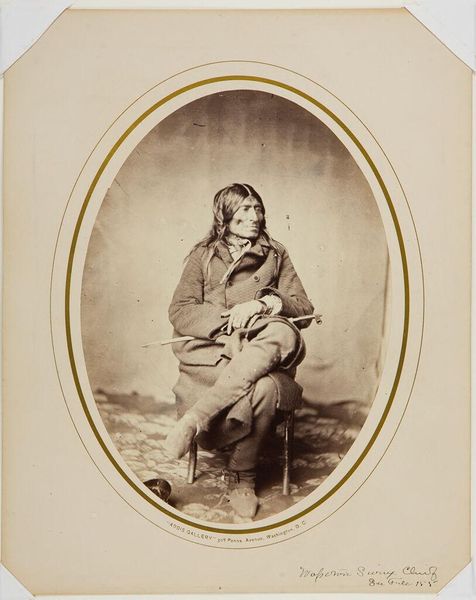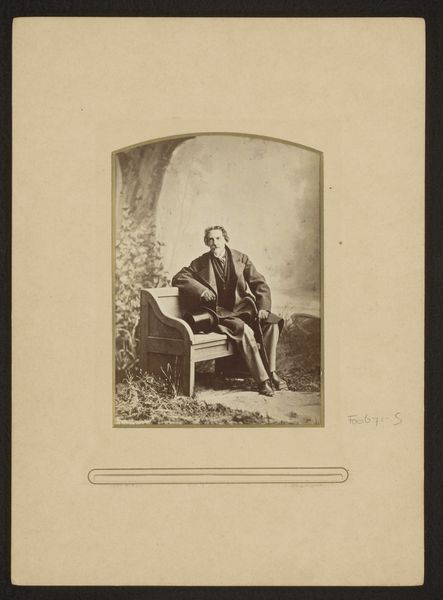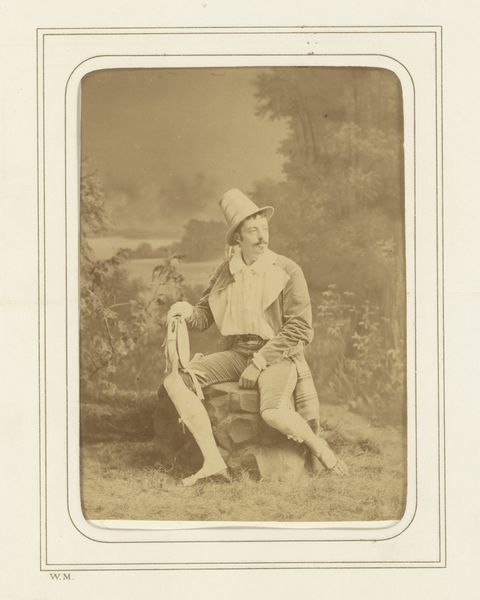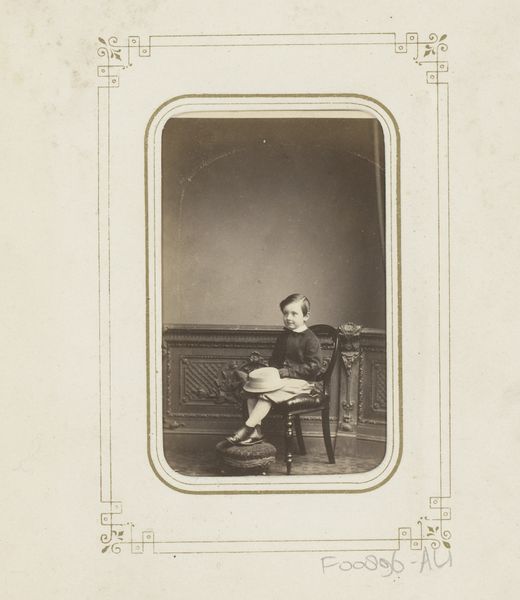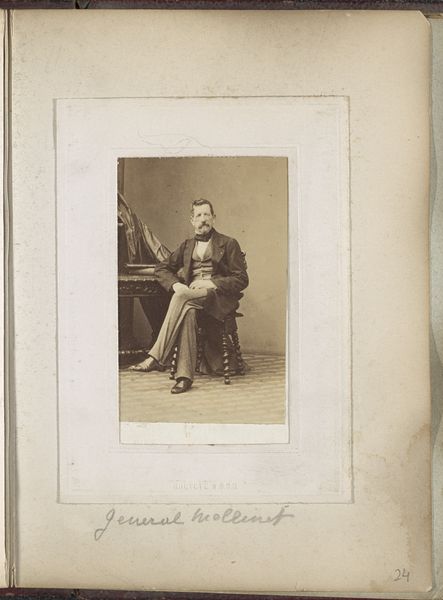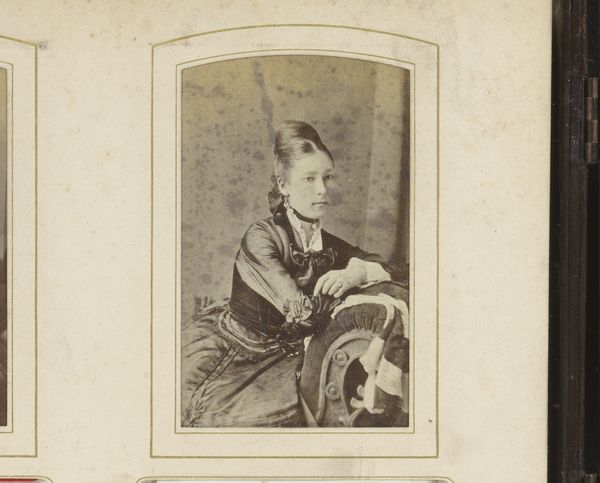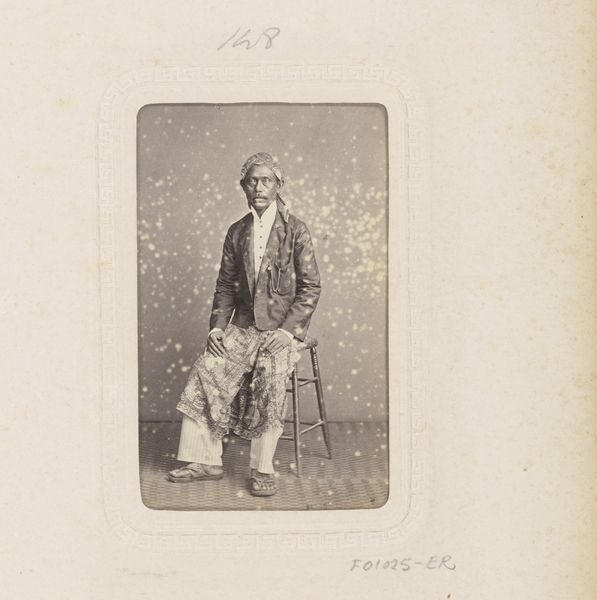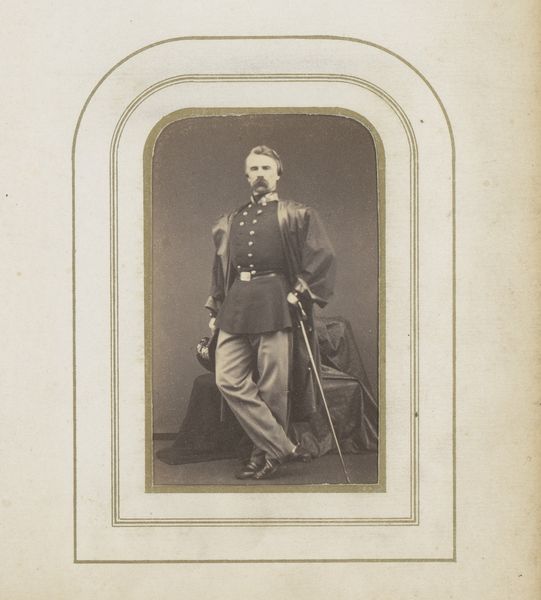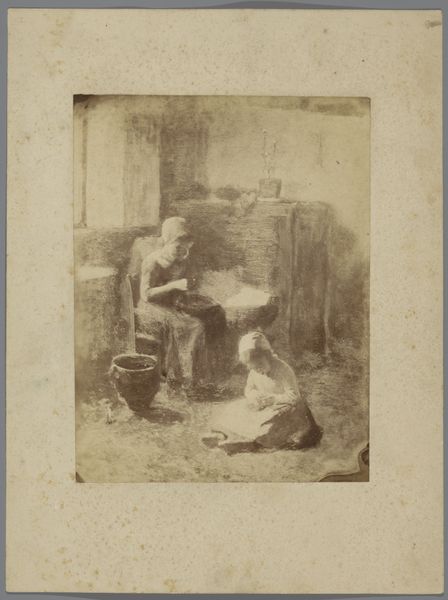
Copyright: Public Domain
Curator: This albumen print, dating to around 1870, is titled "Naples: A Delousing Scene Re-Enacted in the Studio," and is credited to Giorgio Sommer. It depicts a staged scene of poverty in Naples, Italy. Editor: The first thing that strikes me is the contrast – a staged photograph trying to mimic what seems like genuine hardship, though there's a disturbing level of implied hygiene, too, based on the title. I am intrigued by the bare setting; you can practically smell the damp and cold. Curator: Sommer was part of a tradition of photographers documenting social types, especially in Southern Italy. His work needs to be situated within a colonial gaze, a kind of visual ethnography rooted in power dynamics where the poor are "captured" and presented as evidence. The photograph operates within parameters of visual dominance. Editor: Exactly. The staging feels so deliberate. Notice the table to the left; it appears so plain, and almost deliberately placed. We are distanced from it but not able to ignore that its surfaces have likely accumulated its own history through material use, too, and what about the tools beside? How did these get made and under which working conditions? Curator: And the way the figures are arranged - almost mimicking Renaissance compositions of the Madonna and child, but inverted with poverty and social anxieties replacing piety. It speaks volumes about the intersection of class and art history. This 'delousing' itself speaks to ideas around hygiene as tied to morality. Editor: Absolutely. This points us to understanding the historical means by which these pictures could have been made; not easily, especially out on location. How much money went into producing scenes such as these? Also, in focusing our attention on one process, we neglect everything else - where does this money actually come from? Who gets rich, here? What do these individuals photographed earn? Curator: Precisely, because, at heart, Sommer is selling a visual experience rooted in social inequality. Editor: He might be also said to commodify hardship, too. Curator: It also begs ethical questions for us, now - how do we view and interpret images like these in ways that acknowledges the original intent while simultaneously divesting them from exploitative contexts? Editor: In understanding these historic contexts, maybe, and questioning all these motivations allows us also to look more clearly and fairly upon future art that speaks upon class disparities, today, even within the same country or location.
Comments
stadelmuseum about 2 years ago
⋮
Naples held great appeal for tourists not only because of its charming coastal scenery and awe-inspiring Mount Vesuvius, but also thanks to its customs and traditions. Particularly from the 1880s onwards, Italian-based photographers increasingly marketed studies of human beings that shaped and continually fuelled the cliché of the poor but carefree population of Southern Italy. With his outsider’s perspective on the Italian culture, the native Frankfurter Giorgio Sommer contributed to shaping the visual habits of tourists. For some of his genre depictions he had the models simulate supposedly everyday activities in his studio. One such staged scene idealizes poverty by showing an old woman “delousing” two street urchins. These motifs’ popularity was in fact an expression of an entirely different reality: the longing of the photographs’ buyers for a supposedly still intact archaic way of life that represented the antithesis of the industrialized society plagued by noise, hustle, and bustle.
Join the conversation
Join millions of artists and users on Artera today and experience the ultimate creative platform.
